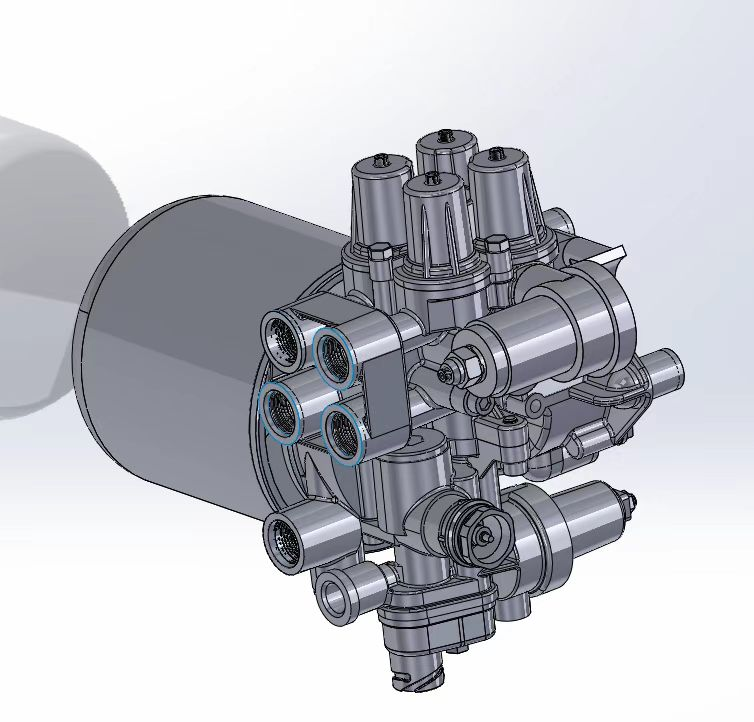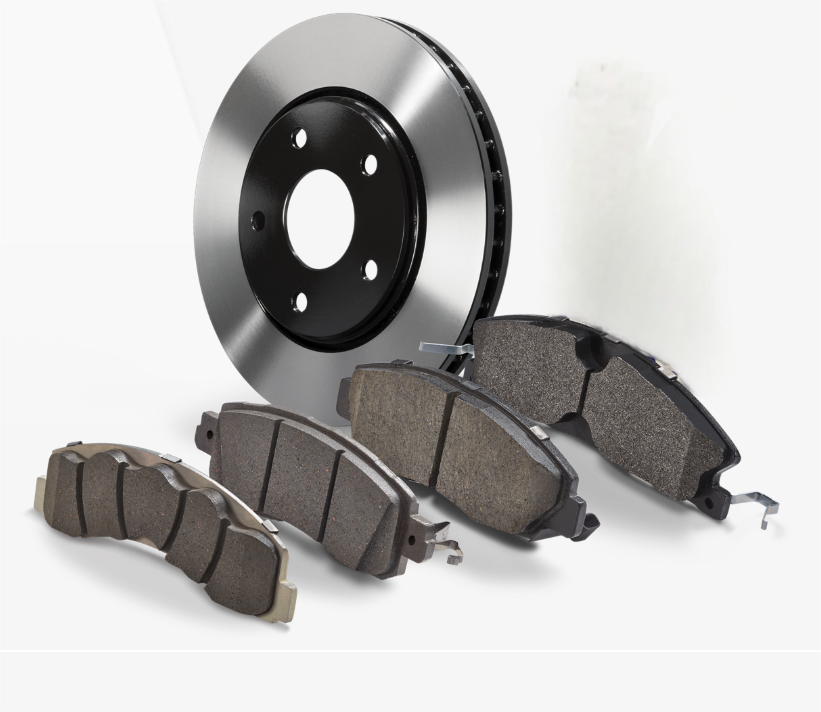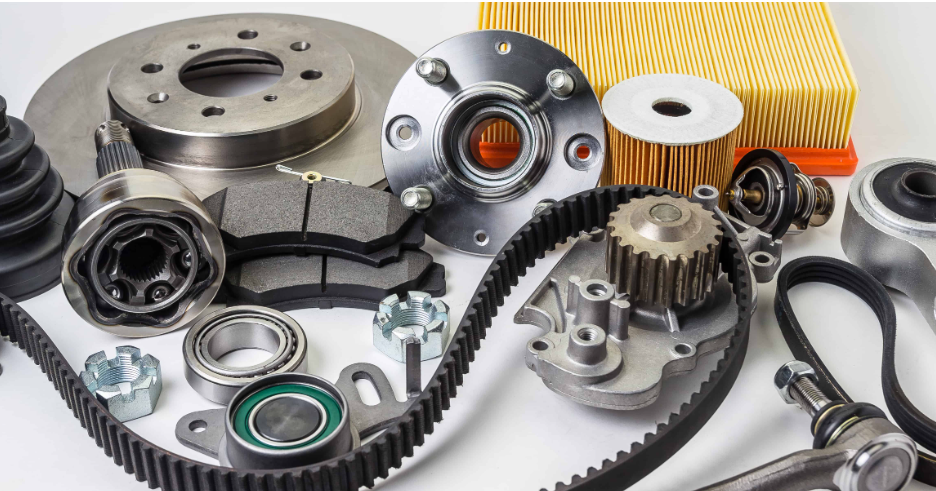Understanding Thermal Challenges in Automotive AC Systems
Defining thermal thresholds in automotive AC systems
Car air conditioning systems really struggle when they hit certain temperature limits, and components start failing fast once those points are reached. Studies have found that when outside temps go over 122 degrees Fahrenheit (which is about 50 Celsius), cars lose between 23 and 37 percent of their cooling power no matter what kind of vehicle it is according to research from SAE International back in 2021. Refrigerant hoses tend to be the biggest problem area here. Standard rubber materials can lose almost two thirds of their strength after going through around 500 heat cycles outside the normal operating range of minus 40 to plus 257 degrees Fahrenheit (or minus 40 to 125 Celsius). This matters because many vehicles spend time in extreme conditions these days.
Key factors influencing heat resistance in AC hoses
Three primary elements dictate hose performance under extreme heat:
- Material composition: Multi-layer designs with heat-reflective barriers enhance durability
- Pressure dynamics: System pressures can spike to 450 psi during compressor cycling, compounding stress under high temperatures
- Environmental exposure: Underhood temperatures often exceed 200°F in stop-and-go traffic, accelerating material degradation
A 2022 International Journal of Automotive Engineering study found reinforced hoses maintain 89% better seal integrity than OEM parts after 1,000 hours at 230°F, highlighting the importance of advanced materials.
Role of the auto AC hose Galaxy 4826 in managing thermal stress
Galaxy 4826 fights off thermal stress thanks to its patented stainless steel mesh reinforcement system that cuts down on radial expansion by around 40% when compared to regular hoses out there. Testing in real world conditions shows these hoses prevent leaks at an impressive rate of 98%, even when temperatures swing wildly between minus 22 degrees Fahrenheit all the way up to 248 degrees F. That kind of performance makes them pretty essential for equipment running reliably in those harsh desert conditions where extreme heat is part of daily operations. When we look at tropical regions too, mechanics find that service intervals last two to three times longer than before. And interestingly enough, about eight out of ten fleet operators say they've seen significantly fewer air conditioning failures since making the switch to these specially designed thermally optimized hoses.
Material Composition and Heat Resistance of Galaxy 4826
Reinforced Rubber and Stainless Steel Layers in Galaxy 4826
The Galaxy 4826 features a dual-layer construction combining reinforced synthetic rubber with a stainless steel mesh core. This design balances flexibility and strength—the EPDM-based rubber resists chemicals and maintains elasticity, while the steel layer limits expansion under pressure and heat, enhancing overall system stability.
How Materials Contribute to Heat Resistance of Reinforced Rubber and Stainless Steel Hoses
The hose's ethylene-propylene-diene monomer (EPDM) formulation retains elasticity up to 150°C, a 32% improvement over basic nitrile rubber. The stainless steel mesh acts as a thermal barrier, reducing heat transfer to inner components by 41% compared to nylon-reinforced alternatives (SAE International, 2023), preserving seal integrity and refrigerant containment.
Comparative Analysis With Standard OEM Hose Materials
According to recent findings from materials science in 2024, regular single layer EPDM hoses tend to lose around 18 percent of their tensile strength when exposed to temperatures of 100 degrees Celsius for about 500 hours straight. The situation looks quite different for Galaxy 4826 though. Tests show these composite hoses degrade just 6% under identical conditions because the steel component spreads out heat stress across the material much better than traditional options do. Looking at what researchers have found about polymer metal combinations, it turns out this mixed method actually boosts thermal stability by nearly 60% compared to standard hose designs. Manufacturers are taking note of these results as they look for ways to improve product longevity without sacrificing performance characteristics.
Long-Term Durability Under Repeated Thermal Cycling
Accelerated aging tests simulating 10 years of daily thermal cycling (20°C – 120°C) demonstrated exceptional resilience:
- Galaxy 4826 retained 94% of its original burst pressure
- Standard hoses fell below minimum safety thresholds after seven years
- No cracks were observed at hose-clamp interfaces
This durability stems from the steel layer constraining rubber expansion and contraction, significantly reducing material fatigue over time.
Thermal Expansion, Seal Integrity, and Leak Prevention
Performance of AC Hoses and Seals Under Thermal Expansion: Engineering Challenges
When AC hoses get hotter than around 120 degrees Fahrenheit (that's about 49 Celsius), they tend to expand somewhere between 1.2 percent to maybe even 3.5 percent according to research from MDPI back in 2023. This stretching creates problems right where the hose connects to other parts. The seal between rubber and metal fittings starts to weaken over time, especially noticeable in older style single layer hoses. These kinds of hoses actually lose roughly 15% of their gripping power just from normal day to day temperature changes. And guess what happens? Refrigerant starts leaking out when it gets really hot outside, which nobody wants because that means losing efficiency and potentially damaging the system.
Design Features Mitigating Leakage During Temperature Fluctuations
Galaxy 4826 incorporates three key innovations to combat leakage:
- Multi-Layer Construction: Stainless-steel reinforcement limits radial expansion to less than 0.8% at 200°F (93°C)
- Heat-Resistant Polymers: Proprietary elastomers remain flexible across a -40°F to 275°F (-40°C to 135°C) range
- Conical Seal Geometry: Graduated sealing surfaces accommodate differential expansion between materials
A 2023 thermal cycling study found Galaxy 4826 maintained 98.7% seal integrity over 5,000 cycles, outperforming standard OEM hoses by 52%.
Common Failure Points in Hoses Under Prolonged Heat Exposure
Extended heat exposure leads to three primary failure modes:
- Micro-cracks in outer hose layers, typically emerging after 1,200 hours of high-temperature operation
- Seal lip hardening, with Shore A hardness increasing by 22% after 90 days at 185°F (85°C)
- Clamp corrosion at stress concentration points due to thermal cycling and moisture ingress
How Galaxy 4826 Reduces AC System Leaks Caused by Temperature Stress
By aligning thermal expansion coefficients across its layered materials, Galaxy 4826 maintains sealing pressure within ±7% during rapid temperature shifts. Field data from desert trials show an 83% reduction in leakage incidents compared to conventional hoses after 12 months of continuous operation in environments exceeding 100°F (38°C).
Real-World Performance in Extreme Heat Conditions
Measuring Cooling Efficiency at Ambient Temperatures Above 40°C
Ambient temps over 40 degrees Celsius really expose any small problems in air conditioning systems, causing noticeable drops in cooling efficiency. The main testing points include how well refrigerant pressure stays stable, whether airflow remains steady throughout the system, and what kind of strain the compressor experiences. These are exactly the kinds of challenges where Galaxy 4826 stands out from the competition. During actual tests, cars fitted with Galaxy 4826 kept their cabins about 3 to 5 degrees cooler compared to regular models after sitting idle for an hour in blazing 45 degree heat. Makes sense why so many technicians recommend this upgrade when dealing with extreme weather conditions.
Data Point: 18% Drop in System Pressure Stability in Non-Reinforced Hoses vs. 4% in Galaxy 4826
System pressure stability is crucial for consistent cooling under extreme heat. Benchmark data highlights a stark contrast:
| Hose Type | Pressure Drop (45°C Ambient) | Compressor Cycle Frequency |
|---|---|---|
| Non-reinforced OEM | 18% | 22 cycles/hour |
| Galaxy 4826 | 4% | 15 cycles/hour |
This 78% reduction in pressure fluctuation decreases compressor wear and minimizes the risk of refrigerant leaks during prolonged exposure to high temperatures.
Real-World Performance of Auto AC Hose Galaxy 4826 in Desert Conditions
Sahara Desert field tests confirmed Galaxy 4826's reliability over 1,200 hours of continuous operation:
- Zero leaks despite daily thermal swings from 55°C to 25°C
- 97% UV resistance retention after 18 months of direct sunlight
- 40% lower sand ingress than braided nylon alternatives
Fleet operators reported a 62% drop in AC-related breakdowns after upgrading to Galaxy 4826 in arid regions, demonstrating its real-world value in extreme environments.
Maintenance and Cost-Benefit Advantages of Galaxy 4826 in Hot Climates
Recommended Inspection Intervals for Hoses in Hot Climates
In high-heat environments, AC hoses require inspections every six months—50% more frequently than in moderate climates. A 2023 SAE International study showed this schedule reduced heat-related failures by 67%. Recommended practices include:
- Visual checks for cracking during routine tire rotations
- Annual pressure testing
- Immediate replacement if diameter expansion exceeds 5%
Upgrading to Galaxy 4826: Cost-Benefit Analysis for Fleet Operators
Fleet operators in hot climates achieve a return on investment within three years when switching to Galaxy 4826, according to 2022 Fleet Maintenance Report data. The annual savings per vehicle are substantial:
| Cost Factor | Standard Hose | Galaxy 4826 |
|---|---|---|
| Annual replacements | 2.1 | 0.4 |
| Labor cost/year | $380 | $72 |
| Downtime hours/year | 14 | 3 |
For a 100-vehicle fleet, this results in $74,200 in annual savings—driving adoption among operators seeking reliability and cost control.
Increasing Adoption in Emerging Markets
According to the latest market report from the International Energy Agency for 2024, sales of high performance air conditioning hoses have jumped by around 40% compared to last year in both Middle East and parts of Africa. This surge makes sense when we look at what's happening with global temperatures. Last year alone saw seven different nations hit record-breaking heat levels above 50 degrees Celsius. Because of these extreme conditions, many transportation departments across the region are starting to require special heat resistance certifications for equipment. The Galaxy 4826 standard has become particularly important here since it can handle temperatures up to 204 degrees Celsius. Most manufacturers are now aligning their products with this specification as governments push for safer infrastructure in increasingly hot climates.
FAQ
What is the main advantage of Galaxy 4826 hoses in extreme heat conditions?
Galaxy 4826 hoses provide superior resistance to thermal stress and expansion due to their stainless steel mesh reinforcement, thereby reducing leaks and enhancing durability in extreme heat conditions.
How often should AC hoses be inspected in hot climates?
In high-heat environments, AC hoses should be inspected every six months, which is 50% more frequent than in moderate climates, to reduce heat-related failures.
Why are Galaxy 4826 hoses recommended for fleet operators?
Galaxy 4826 hoses are recommended for fleet operators due to their long-term cost savings, reduced downtime, and significant decrease in AC-related breakdowns.







